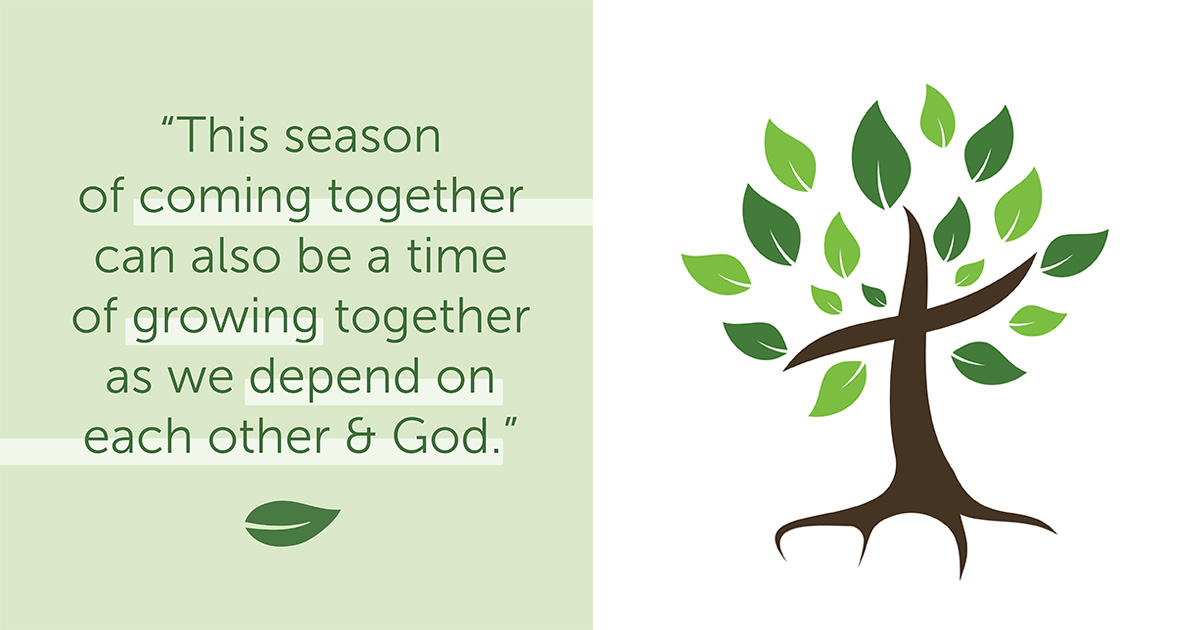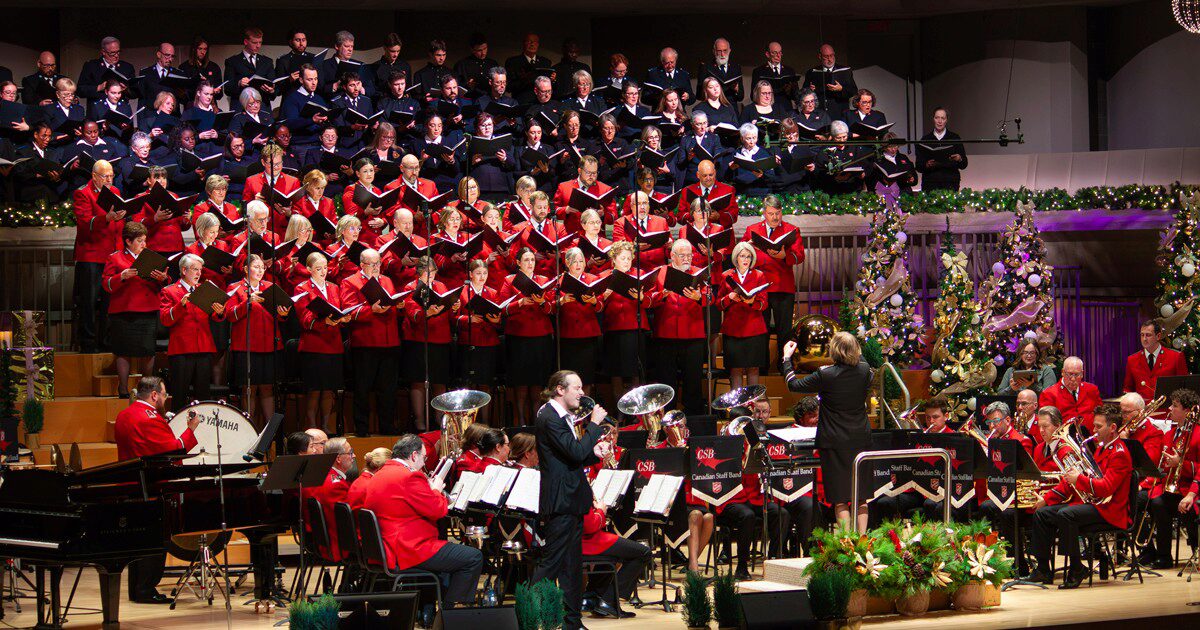One of the four pillars of Mobilize 2.0 is strengthening spiritual health. At the heart of The Salvation Army’s mission are healthy congregations. In the following months, the corps mission resource department will share a series of articles that explore the foundations of a healthy corps: authentic community, biblical stewardship, contagious evangelism, discipleship and effective leadership.
How healthy are you? Over the past couple of years, personal health assessments and rapid viral tests have become normal. It has been necessary for us to become aware of our bodies and whether we can accomplish what we want to achieve in our day. In the same way we think about how to improve our personal health, we can think about how to contribute to congregational health.
When we think about the life of our corps, what are the ways we think about health? Imagine creating a rapid assessment or a stress test for church. When corps leaders talk about corps life, often there are pastoral concerns for individuals who need prayer and support, but there is also an intuitive sense of how “we” are all doing together.
There are diagnostic options. Some formal congregational assessments are observations of trends in attendance, participation or financial contributions, which raise questions about the underlying dynamics. Most assessments involve surveys or discussion groups that prayerfully draw out the perceptions of soldiers and adherents. Regardless of where our congregation might be on the congregational life cycle (salvationist. ca/corps-mission/corps-administration/corps-health), there is a collective desire to be vibrant and grow in healthy ways.
The Body of Christ
In many ways, the pandemic has been a time of congregational examination. Our experience of connectedness was challenged as we complied with guidelines to protect the physical health of the people around us. It may be that the stress of the pandemic surfaced other issues or tensions, but perhaps it also inspired creativity in forming community and engaging in outreach. Some of us may yearn for how things used to be, while others may be looking ahead to the future God is unfolding in front of us. The conversations we have with each other about these issues are important.
Spiritual discernment should be at the heart of our discussions about corps health, and biblical wisdom can guide our interaction with each other. Most of the pastoral letters in the New Testament are about congregational health. They address spirituality, theology, holiness, ethics and the general behaviour appropriate for people who are followers of Jesus. It is important to read the letters that are addressed to the early churches not as communication for individuals but for the community of faith. Note that some were addressed to “God’s holy people in Ephesus” (Ephesians 1:1) or “to the churches in Galatia” (Galatians 1:2) or “to the church of God in Corinth” (1 Corinthians 1:2). The wisdom shared was for communal discernment, reflection and action.
One of the ways Paul explains healthy congregational life is with the image of “the body of Christ.” Each of us contributes to the whole. In his letter to “all in Rome who are loved by God and called to be his holy people” (Romans 1:7), Paul writes: “For just as each of us has one body with many members, and these members do not all have the same function, so in Christ we, though many, form one body, and each member belongs to all the others. We have different gifts, according to the grace given to each of us. If your gift is prophesying, then prophesy in accordance with your faith; if it is serving, then serve; if it is teaching, then teach; if it is to encourage, then give encouragement; if it is giving, then give generously; if it is to lead, do it diligently; if it is to show mercy, do it cheerfully” (Romans 12:4-8).
This description is sandwiched between the encouragement to humbly offer ourselves both to God and each other, and the recurring reminder to sincerely love each other, but the emphasis is on offering our different gifts for the good of the body. The human body is used repeatedly as an image for the body of Christ to emphasize how even when we are different, we are indispensable to each other (see 1 Corinthians 12) or that we each have a part to play in building each other up (see Ephesians 4:11-16) so that we function properly together.
A Piece of the Puzzle
What does this mean where we live? People who have studied churches of different traditions tell us there are multiple characteristics that work together to create a flourishing Christian community. If we reflect on what is essential, we can identify the need for effective leadership to encourage faithful discipleship, which creates an authentic community with a generosity of spirit that naturally invites others to share in Christian life together. These are pieces of the puzzle that can create a beautiful picture with the guidance of the Holy Spirit. What might be easy for us to gloss over is the interconnectedness, that it is my use of my talents that contributes to the healthy witness of our congregation. We are each an essential piece when we offer and receive each other’s gifts.
The various lists of gifts or talents can be read as both specific and general. We may have a specific role to play within the congregation as a preacher, teacher, financial contributor or the person serving food, but any of us can speak the words God has given us to say or be generous or be compassionate. This applies particularly well to the idea of leadership. While some people may have a title or job description as leader, any one of us can offer to ensure a specific task gets done. It is not so much about you or me making our own contribution as it is being attentive to what Jesus is directing us to do so that the body is healthy.
“The pandemic created a test, not just forThe Salvation Army, but for all Christiancongregations to sort out what isessential.... This season of coming togethercan also be a time of growing together aswe depend on each other and God.”
During the pandemic, a few corps organized prayerful, caring people to contact everyone on the directory list, including some who had not been regular attenders, with a friendly call to check in on them during social isolation or lockdown. For others, it was more spontaneous as people were encouraged to reach out to neighbours. While volunteerism was challenged by health concerns, some corps had people step up to offer their time to serve the community and let people know they had not been forgotten.
One corps, close to the end of the pandemic restrictions in their region, was doing a fall cleaning day at their building when someone noticed a neighbour from the community sitting on the curb. The soldier cautiously approached the person and when they saw that they were in distress, offered to help. Hearing the story of the person on the curb, the concerned soldier remembered that someone with a social work background was on the cleaning crew and could help address some of the challenges facing their neighbour. They made an introduction, and the result was that someone in that community knew they were loved by The Salvation Army. The corps officer learned about this scenario afterward and celebrated God at work.
Growing in Love
These stories are not isolated incidents. As you read Salvationist, note how often teamwork is mentioned and how the different gifts of officers, soldiers, adherents, friends and volunteers contribute to how God is reconciling and redeeming all things. This is the “deeper life of faith in action” mentioned in the strategic objectives of The Salvation Army (salvationist.ca/territorialstrategy). The challenge presented to us, in our own congregations and communities, is how we both offer and recognize gifts and talents. Take the initiative to reach out, connect with someone and offer to help. When you are in conversation or working alongside a friend at the corps, take a moment to encourage them. One of the easiest ways to encourage someone is to simply state out loud your observation of their talents in action.
The pandemic created a test, not just for The Salvation Army, but for all Christian congregations to sort out what is essential. We were created for relationship. When required to isolate or keep our distance for the sake of public safety, we learned what was important in our congregational life. This season of coming together can also be a time of growing together as we depend on each other and God. We can offer ourselves as we partner with what the Holy Spirit is doing all around us. We can be healthy as we “grow to become in every respect the mature body of him who is the head, that is, Christ. From him the whole body, joined and held together by every supporting ligament, grows and builds itself up in love, as each part does its work” (Ephesians 4:15-16).
The corps mission resource department offers support to corps in developing these abilities together. Visit salvationist.ca/corps-mission.
James W. Watson is a corps health and planting consultant in the corps mission resource department. Major Norman Garcia is the corps officer at Meadowlands in Hamilton, Ont.
Illustrations: Getty Images
This story is from:










Leave a Comment